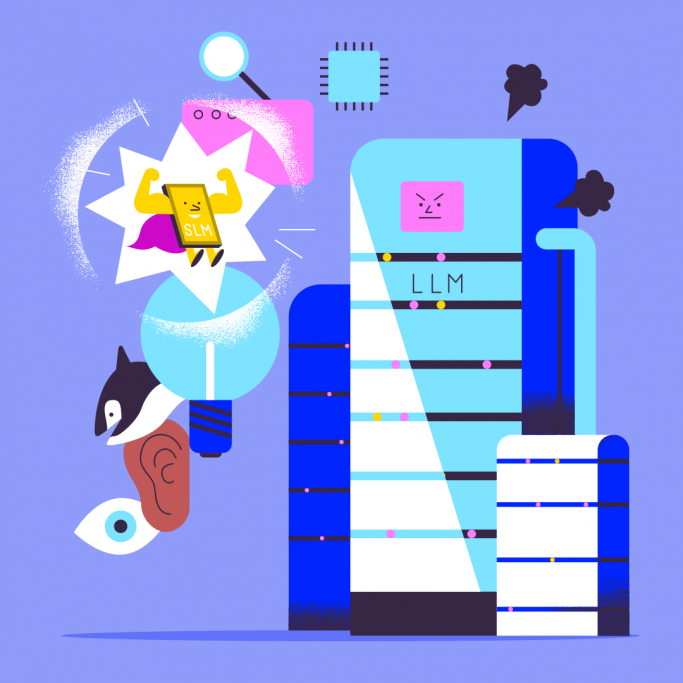
3 big AI trends to watch in 2024
By Vanessa Ho
2023 was a major year for generative AI, as it went from research labs to real life with millions of people using it through popular tools like ChatGPT and Microsoft Copilot. This year, AI is expected to become more accessible, nuanced and integrated in technologies that improve everyday tasks and help solve some of the world’s most challenging problems.
Here are three important AI trends to keep an eye on in 2024.

Small language models
SLMs are still quite large with several billion parameters — in contrast to hundreds of billions of parameters in LLMs — but they’re small enough to run on a phone offline. Parameters are variables, or adjustable elements, that determine a model’s behavior.
“Small language models can make AI more accessible due to their size and affordability,” says Sebastien Bubeck, who leads the Machine Learning Foundations group at Microsoft Research. “At the same time, we’re discovering new ways to make them as powerful as large language models.”
Microsoft researchers have developed and released two SLMs — Phi and Orca— that perform as well as or better than large language models in certain areas, challenging the notion that scale is required for performance.
Unlike LLMs trained on vast amounts of internet data, the smaller models use curated, high-quality training data, with researchers finding new thresholds for size and performance. This year, you can expect to see improved models designed to foster more research and innovation.

Multimodal AI
You can find out from Copilot what’s happening in an uploaded image, thanks to a multimodal model that can process images, natural language and Bing search data. Copilot can generate, for example, relevant information like the historical significance of a monument in your photo.
Multimodal AI is also powering Microsoft Designer,a graphic design app that can generate images based on a description of what you want. And it enables custom neural voices, or natural-sounding voices useful in text readers and tools for people with vocal disabilities.
“Multimodality has the power to create more human-like experiences that can better take advantage of the range of senses we use as humans, such as sight, speech and hearing,” says Jennifer Marsman, principal engineer for Microsoft’s Office of the Chief Technology Officer, Kevin Scott.

AI in science
To mitigate climate change and help farmers work more efficiently, Microsoft researchers are using AI to build better weather predictors, carbon estimators and other tools for sustainable agriculture.They’re also developing AI technologies that will help farmers in the field, including a chatbot that can help a farmer identify a mysterious weed or compare the efficiency of different irrigation methods using farm-specific data.
In life sciences, researchers are collaborating on the world’s largest image-based AI model to fight cancer and using advanced AI to find new drugs for infectious diseasesand new molecules for breakthrough medicines.The technology is compressing scientific trial and error — work that can take years — into just a few weeks or months.
AI is also transforming materials science, a broad field focused on creating new materials with specific properties. One recent breakthrough showcased the power of AI and high-performance computing toaccelerate the search for less toxic battery materials.
“Artificial intelligence is driving a revolution in scientific discovery,” says Chris Bishop, director of theAI4Science team at Microsoft Research. “That may turn out to be the most exciting, and ultimately the most important, application of AI.”
